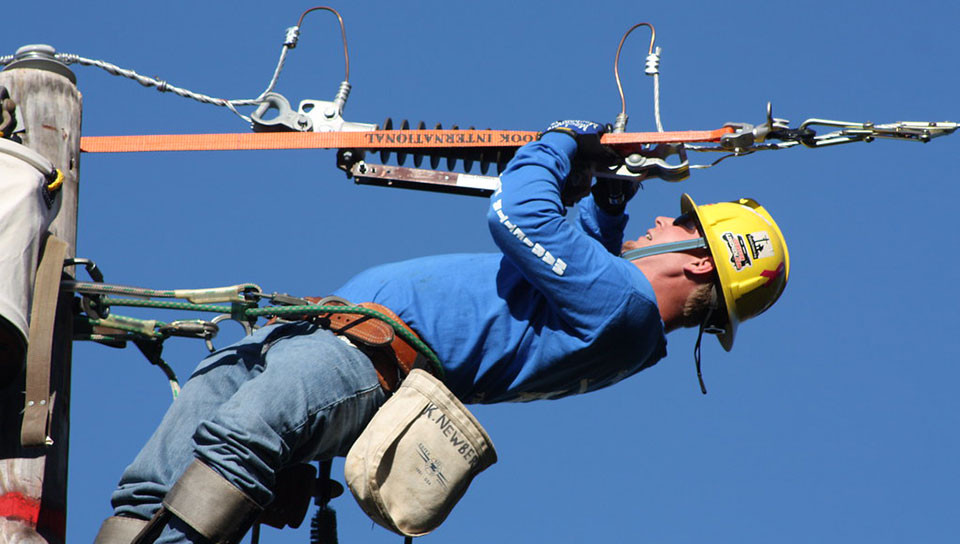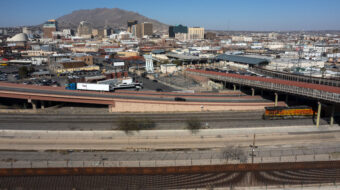
TUCSON, Ariz. (PAI)—Four years ago, on a 95-degree afternoon in Tucson, Ariz., a worker was building a platform for an outdoor concert. He hasn’t worked since.
The worker, whose name advocates are withholding because he both fears retribution and being barred from future jobs was putting heavy 4’x 8’ decks up after lunch, says Shannon Foley, a safety and health activist in the southern Arizona city. Then he collapsed.
The extreme heat felled him. Paramedics attended to him, and later sent him home, she reported. But he had suffered kidney damage, “and has not recovered and returned fully to work. He’s had serious financial issues ever since,” said Foley, a member of Theatrical and Stage Employees Local 415. Her local includes stage builders.
The Arizonan is just one victim of a largely ignored workplace danger, heat, say Tucson workers and activists, convened August 19 by the labor-backed National Council on Occupational Safety and Health (NACOSH).
It’s particularly acute in Arizona, the 10th hottest state, studies show. “In Phoenix, in summer, it’s 95 degrees at 6 am,” says Foley. Daytime temperatures in Phoenix and Tucson regularly top 100 degrees in the summer, records add. That heat takes a big toll on workers.
“Injuries and illnesses due to heat are not properly reported,” says Jessica Martinez, NACOSH’s co-executive director. Often, they’re put down to other causes, she adds. “People are dying every day, and they’re not attributing it to heat,” says Foley.
The problem particularly hits workers of color, Martinez noted. She cited a National Public Radio investigation, released August 17, showing Hispanic-named workers account for 17% of all U.S. workers, and one-third of those felled by excessive heat.
Sometimes, heat illnesses and injuries aren’t reported at all
“I experienced heat exhaustion while I was fixing a leak on a lady’s roof,” Kurt Haumesser told the group. It occurred even though Haumesser and his colleague “had prepared ourselves the day before” to face the heat.
“We were up there three hours” and then drove across town, he explained. “We missed our turn and didn’t realize it. We were both kind of disoriented and real dizzy.”
They stopped, got out of their vehicle “and we had to vomit. But the whole day I was just worn out. It was some really serious stuff.”
It’s stories like those that led NACOSH to try to raise the profile of the dangers of excessive heat on the job. It’s lobbying the federal Occupational Safety and Health Administration (OSHA) for a rule ordering employers to, with their workers, develop specific plans to cope with heat—and for OSHA to enforce bosses to obey.
Exposure vastly underreported
Heat exposure, including death, is vastly underreported. Often associated with farm workers overcome in the nation’s fields, it also occurs in unairconditioned warehouses—think Walmart and Amazon—other confined spaces, and among outdoor workers such as telecom installers and roofers.
How underreported? Even the AFL-CIO’s annual Death On The Job report, the most authoritative volume on job injuries and deaths, reports only 187 federal OSHA inspections of heat-caused safety problems in fiscal 2016, which ended that Oct. 1. And fewer since then.
There were 74 heat-related probes in FY2017, 95 in FY2018, and 178 in FY2019, the last year with available data. That’s out of an average of 32,441 OSHA investigations each year.
NACOSH, the United Farm Workers, other unions, and labor constituency groups have also lobbied lawmakers for legislation mandating bosses protect workers against excessive heat. The Farm Workers, presenting solutions, prompted a congressional committee hearing several years ago, but the legislation has gone no farther than that, so far.
Advocates want the feds to step with a national rule because, as Foley said, “We have an uphill battle here” with a GOP-run legislature. The majority listens to bosses, not workers.
But the inspection data also points up another problem. OSHA is understaffed
The number of inspectors at the agency last year was lower than it was in OSHA’s first full calendar year, 1971, the AFL-CIO says. Its report shows 1,102 federal OSHA inspectors in 1975, covering 85.85 million workers, not counting government workers and states with their own OSHAs. In 2020, OSHA had 901 inspectors covering 147.8 million workers.
“Back in the 80s, with more inspectors, employers had the fear of God put into them” about job safety, Haumesser said. “Now it”—lack of enforcement—“gives them free rein to get away with a lot of stuff.”
Absent enforcement, Martinez and other speakers said, one solution is educating workers about their rights—especially their right to report job safety and health issues. But between language problems and bosses’ intimidation, many don’t even realize they have those rights. Another solution, several speakers declared, is unionizing.
And some states and cities, notably Miami-Dade, established their own enforcement of firms to prevent worker deaths and illnesses. Florida, data shows, is the hottest U.S. state.
And even where workers do get a break, other problems arise, noted Peter Dooley of the Arizona Council on Occupational Safety and Health. “At the airport, workers had an air-conditioned break room,” he explained. But Arizona’s GOP government bans masks and physical distancing to battle the coronavirus and its raging Delta variant. “The workers were all crowded in,” he added.










